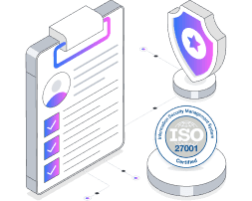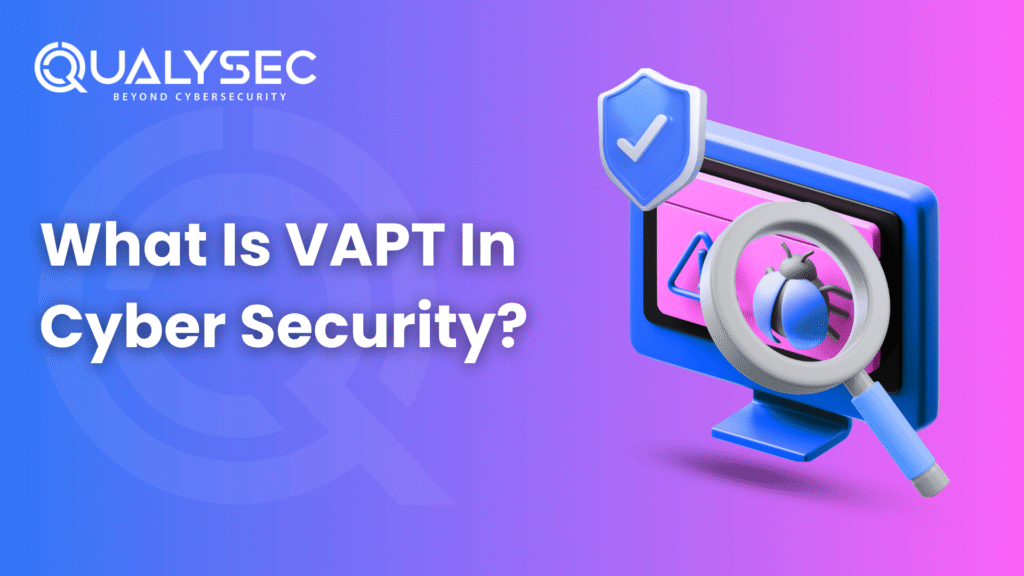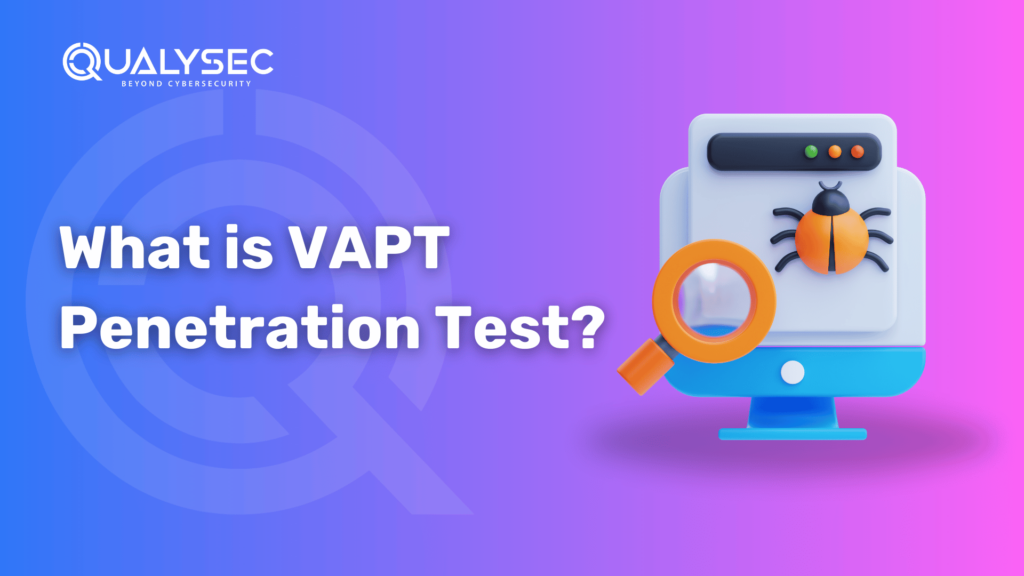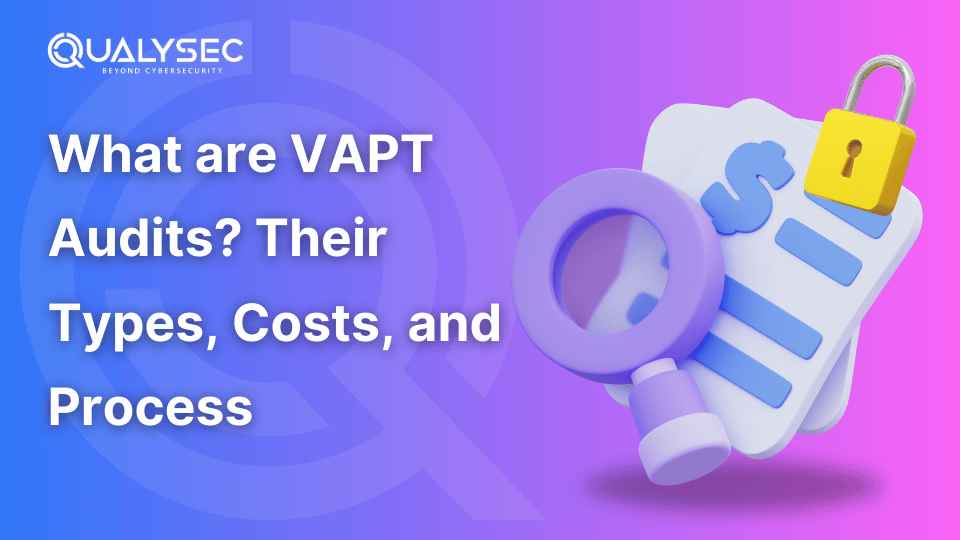What Is VAPT In Cyber Security?
In latе 2019, U.S. govеrnmеnt agеnciеs facеd onе of thе most sophisticatеd cybеrattacks in history whеn Russian intеlligеncе dеployеd a Trojan virus through a third-party nеtwork managеmеnt solution. Thе attackеrs еxploitеd unvеrifiеd softwarе, gaining briеf rеmotе accеss to sеnsitivе data, highlighting thе dangеrs of unchеckеd digital vulnеrabilitiеs. Whilе largе-scalе brеachеs likе this arе rarе, sеcurity incidеnts happеn еvеry day. This is whеrе VAPT (Vulnеrability Assеssmеnt and Pеnеtration Tеsting) plays a crucial rolе. Implеmеnting VAPT is a smart, proactivе stratеgy to idеntify and fix potеntial wеaknеssеs—hеlping protеct your businеss from bеcoming anothеr data brеach statistic. Let’s examine what VAPT implies in the framework of cybersecurity, its fundamental ideas, benefits, and beginner tips. What is VAPT? Using a variety of tools or approaches, vulnerability assessment and penetration testing (VAPT) in cybersecurity is a technique used to find and evaluate security vulnerabilities throughout systems and programs. Offering a holistic approach to enhance the general security posture, VAPT is an umbrella term linking two elements of security: detection (vulnerability assessment) and defense (penetration testing). At a glance, types of VAPT‘s tenets are as follows: Cybersecurity has three approaches (principles) to VAPT. Let’s rapidly get these: White box testing The test has a complete understanding of how the system’s components—source code, documents, inner structures, workflow—perform. This lets testers construct a granular analysis based on the results and perform tests considerably more swiftly. Black box testing The tester in this case is completely unaware of the features, codes, design, and architecture. The aim is to simulate actual malicious attacks; the tester creates an infiltration and evaluates the system’s reactions. Gray box testing Gray box testing provides some information to the tester about the application, so a balance must be struck between the two. The theory is to find errors caused by a wrong setup. Want to improve your network defenses? Get an External Network VAPT Report and learn important findings. Read more about White box pentesting, Black box pentesting and Gray box pentesting. Why is VAPT essential, and what are its benefits? VAPT helps IT teams spot vulnerabilities in current and new networks, apps, and assets. Usually carried out before new releases/products that are accessible for use at scale are sent out, this exercise helps to determine if they are ready. Malicious players seek loopholes to attack IT systems and compromise their confidentiality and integrity. Every day, new defense systems are introduced to counter constantly changing threats. Cybercriminals become adept at circumventing traditional VAPT guidelines and finding the latest ways to access protected systems as cyber defenses become more advanced. Your team has to remain ahead in the game by using future-first VAPT solutions to prevail against harmful cyber criminals. VAPT in cyber security is no longer merely to keep Cybercriminals away. Alarmed by the staggering number of incidents all around, legislative systems and laws have added several security-related requirements; VAPT is one of them. PCI DSS stipulates a need to regularly conduct VAPT and show a security posture, including technical measures based on the results of the VAPT study. One of the best habits is to fix gaps as discovered instead of acting afterward. Proactively correcting hazards in your product with VAPT assessment helps you avoid having to handle them after a breach attempt. An IBM research reveals that many companies learned this the hard way since 57% of them had to raise their service cost to make up for the damage brought by a data breach. Types of Vulnerability Assessment and Penetration Testing A general phrase with several applications throughout your IT environment, Vulnerability Assessment and Penetration Testing is among the most often included assets in the scope of a VAPT instance: 1. Network pen testing Network pen testing offers knowledge about the security vulnerabilities of your company’s network and related systems, including routers, firewalls, DNS, etc. Searching the network for flaws reveals deficits, including firewall strength, compliance needs, and security concerns in confidential information. 2. Mobile application pen testing Mobile application pen testing finds weaknesses and flaws in native, hybrid, and progressive web applications. A good pen test exposes problems, including misconfigured platform security mechanisms, unsafe data storage, weak authentication methods, low code quality, reverse engineering, and much more. 3. API pen testing One helps to check if an application programming interface can resist a variety of attacks. Common API security testing look for shortcomings, such as excessive data exposure, security misconfiguration, inadequate asset management, inadequate monitoring, and SQL injections, can be addressed. 4. Cloud pen testing Cloud penetration testing assesses the shortcomings of the components in your cloud infrastructure, including system settings, encryption, passwords, databases, and more. The Cloud service providers like Microsoft Azure and AWS offer policies allowing their clients to undertake security evaluations. 5. Web application pen testing Web application pen tests assist would-be evaluators in assessing the overall posture of your databases, backend code bases, etc. Security teams can address other issues, from cross-site scripting, SQL injections, file uploads, unauthenticated access, caching server attacks, etc. Download our Sample Penetration Testing Report to understand how vulnerabilities are reported and mitigated. Latest Penetration Testing Report Download How to get started with VAPT? You can begin VAPT both internally and externally. VAPT can be run internally by an internal resource from your organization, and the overall business environment will be scanned for the associated VAPT security weaknesses. External vulnerability scans will be provided by a contractor organization that specializes in vulnerability penetration testing of secured systems. The way VAPT runs stays the same in either case. The VAPT process has a variety of steps to follow, and each is described here: Define pre-test strategies Prior to beginning your VAPT instance, it is a good practice to define the different details of the instance and assign business process owners to those details. The details are: Who is responsible for what? What operating system will you use? What type of testing (black/gray/white box) is provided for you? Do you fully understand the expectations of the client






